Last July, Philly YIMBY shared the plans for a mixed-use development at 1100 Wharton Street in Passyunk Square, South Philadelphia. Designed by JKRP Architects and developed by the Alterra Property Group, the complex is anchored with a new six-story, 162,335-square-foot building with a 20,000-squarte-foot supermarket at the ground floor, 155 residential units, and a 4,000-square-foot roof deck. The development will also include a thorough rehabilitation of the block, which is also home to Wharton Lofts, a 71,360-square-foot mixed-use building with 45 residential units, a 51,010-square-foot office building, and 18,616-square-foot police station, and a fire station. The fire station, located at the northeast corner of South 12th Street and Reed Street, across from Columbus Square Park, will be demolished and relocated into a new building on the east side of the block at the intersection of South 11th and Reed streets; the six-story mixed-use building will rise in place of the fire station. In total, the block will hold 239 parking spaces, with 62 in the basement level of the mixed-use building, 94 surface spaces in the center of the block, and 83 off-site spaces. Recently YIMBY has visited the development site and extensively documented its existing conditions to share with our readers.
Our visit has found no signs of demolition of construction, which was expected since the only permit for the project, a zoning lot line adjustment permit, was issued only earlier this month. Please look below for images of stately Wharton Lofts, the imposing Fleet Building, the two-story police station, and the soon=to-be demolished fire station.
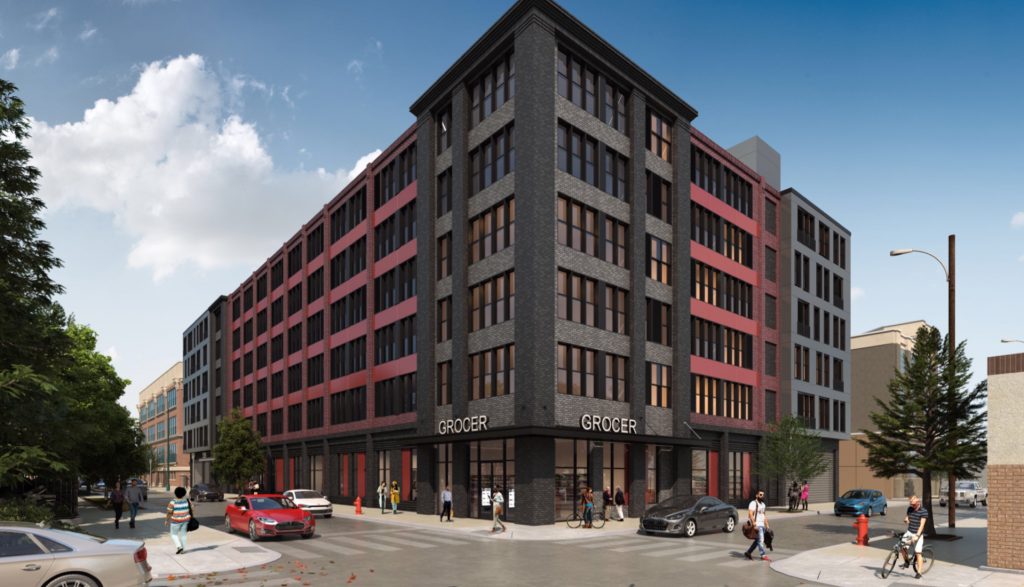
Rendering of 1100 Wharton Street. Credit: JKRP Architects
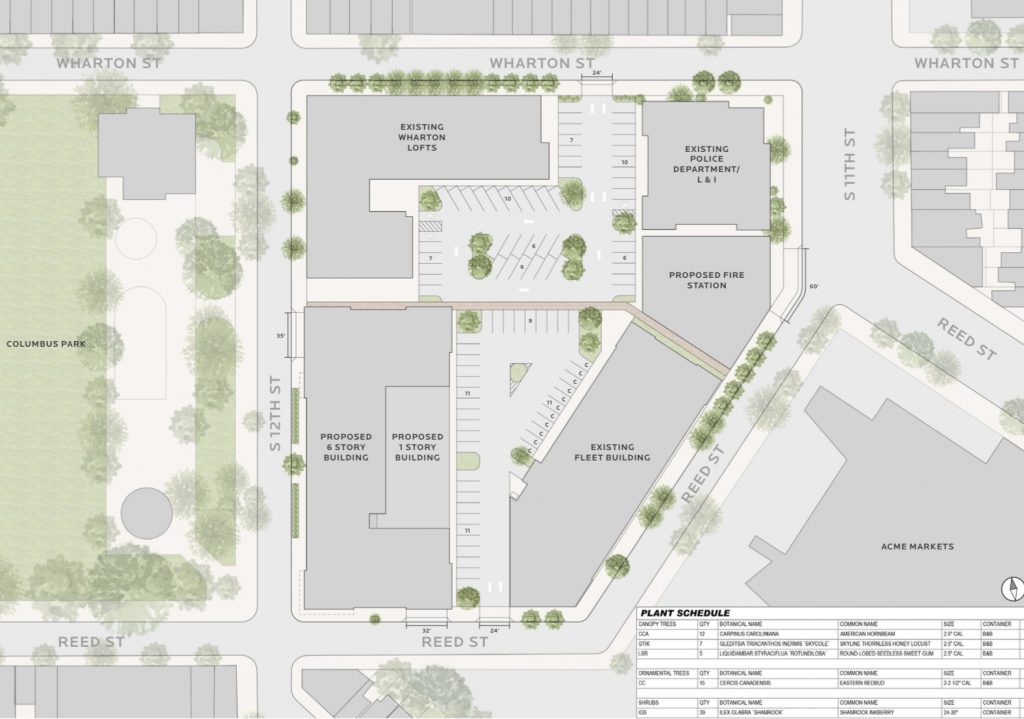
Site plan of 1100 Wharton Street. Credit: JKRP Architects

1100 Wharton Street. Photo by Jamie Meller. April 2022
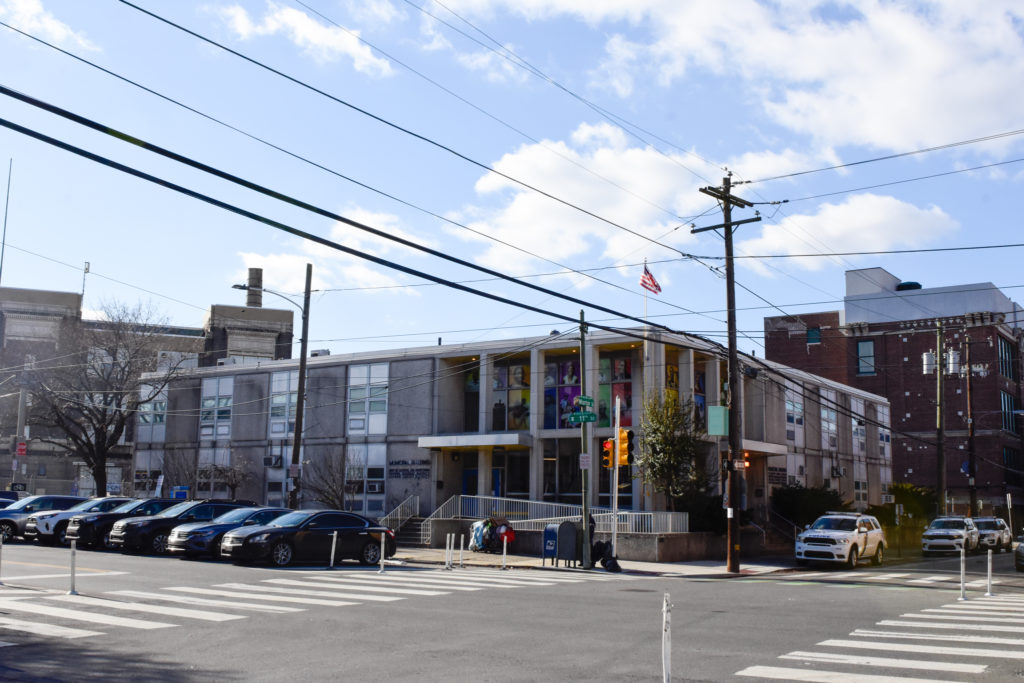
1100 Wharton Street. Photo by Jamie Meller. April 2022
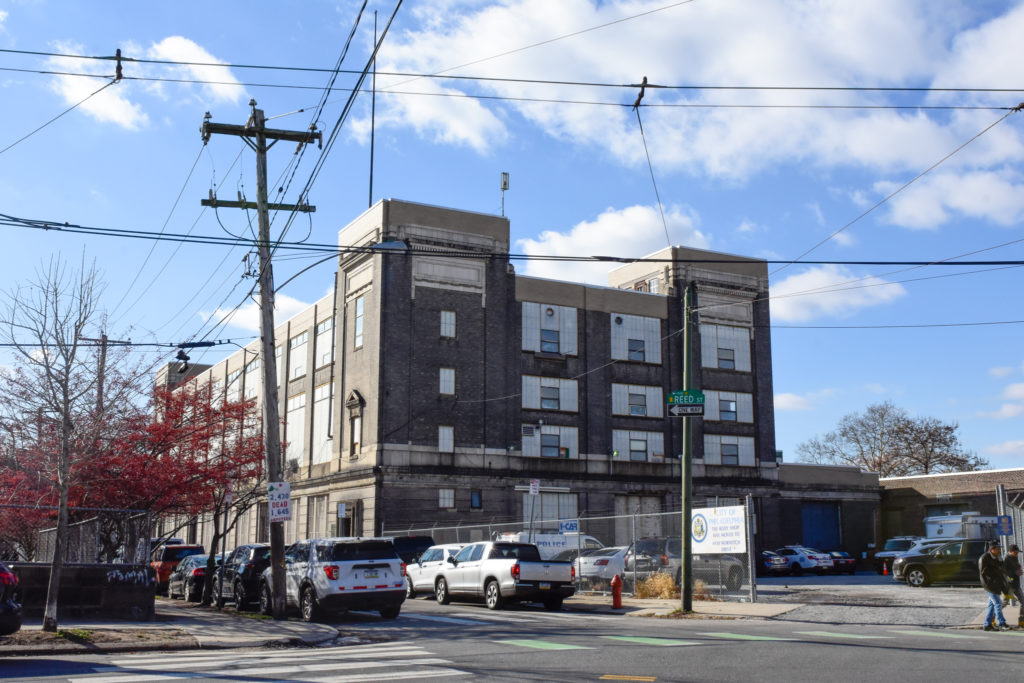
1100 Wharton Street. Photo by Jamie Meller. April 2022
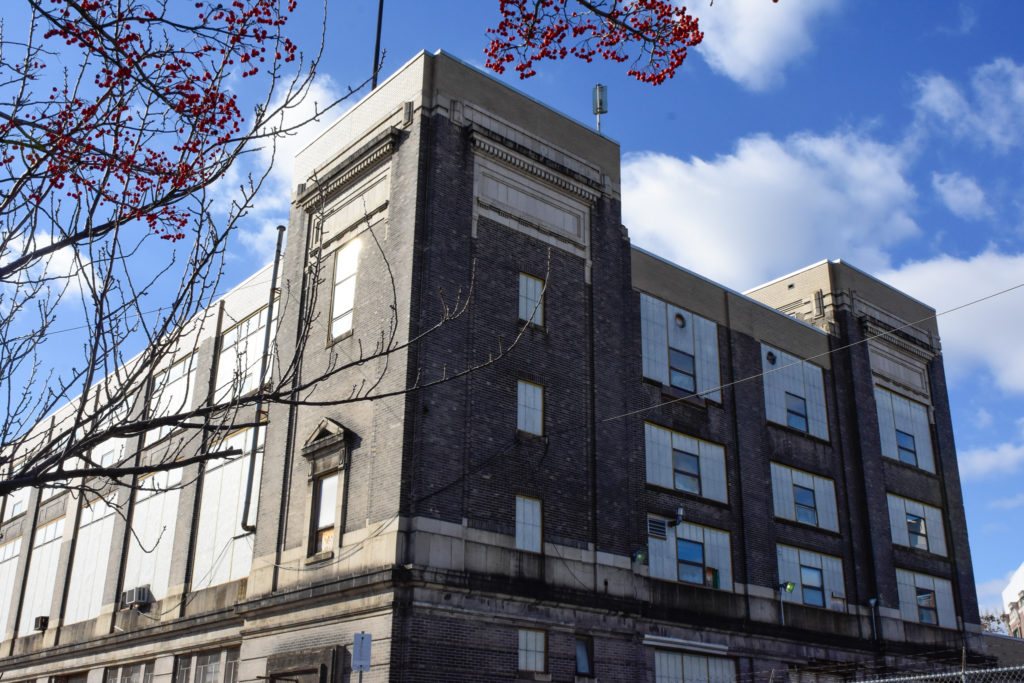
1100 Wharton Street. Photo by Jamie Meller. April 2022
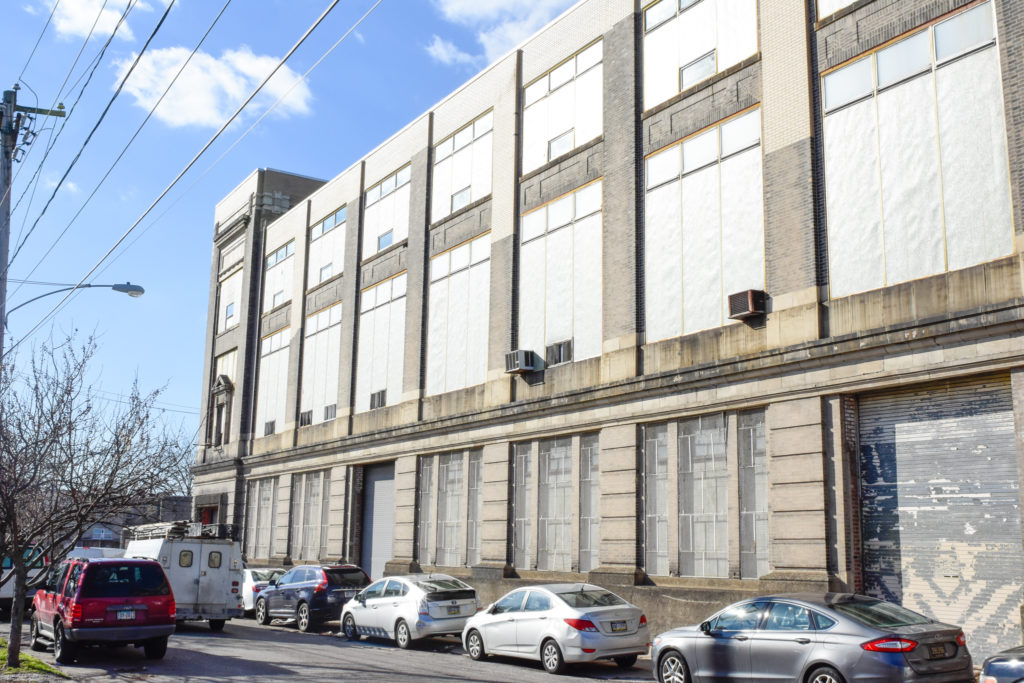
1100 Wharton Street. Photo by Jamie Meller. April 2022

1100 Wharton Street. Photo by Jamie Meller. April 2022
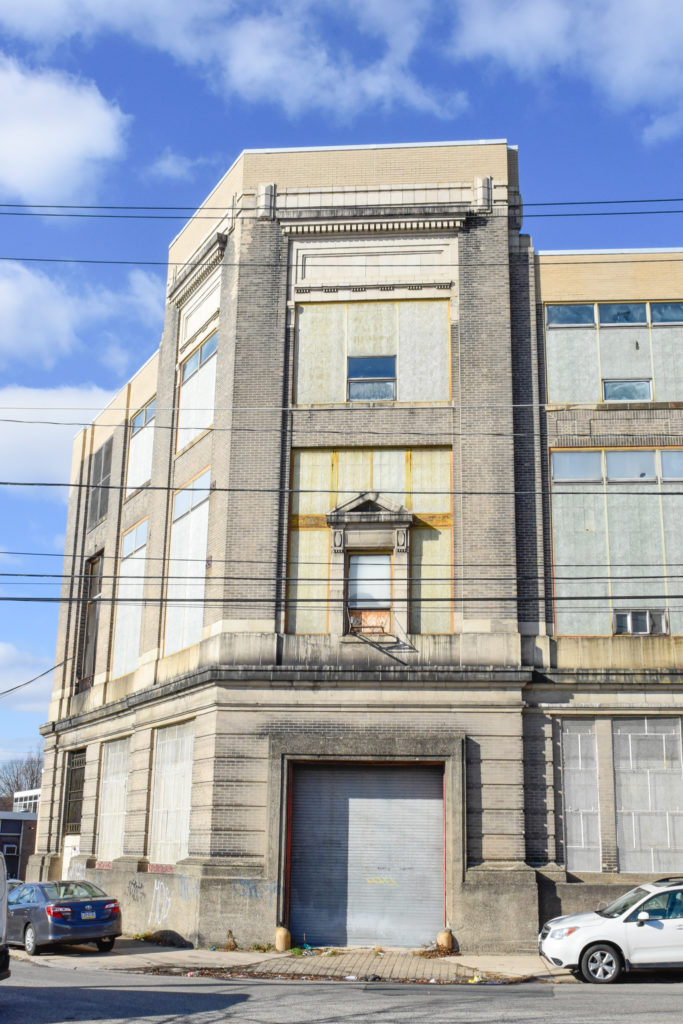
1100 Wharton Street. Photo by Jamie Meller. April 2022
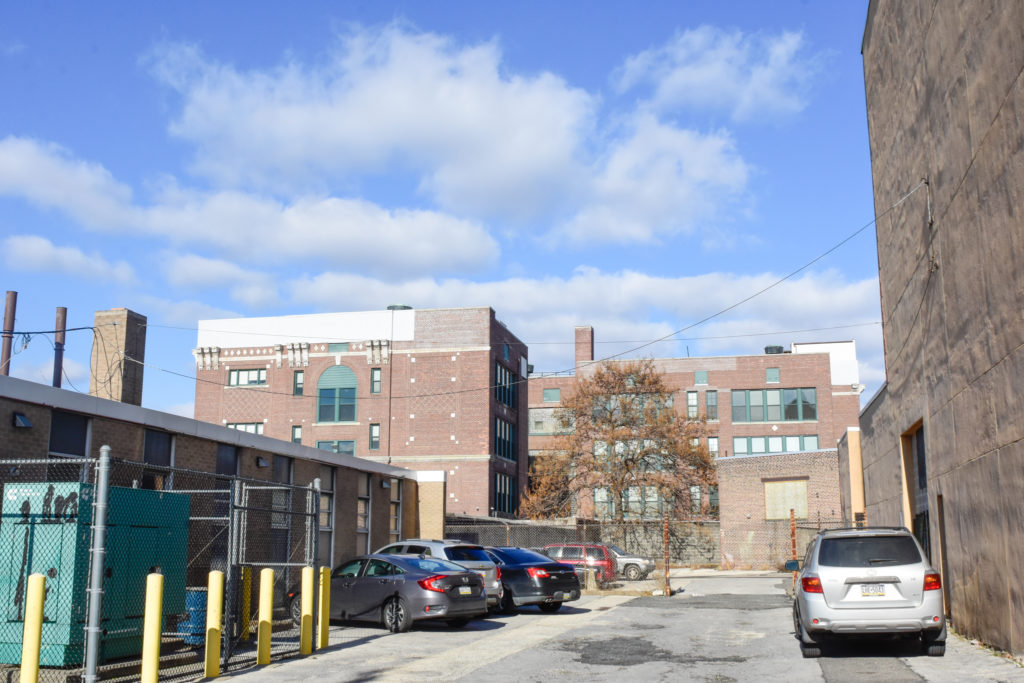
1100 Wharton Street. Photo by Jamie Meller. April 2022
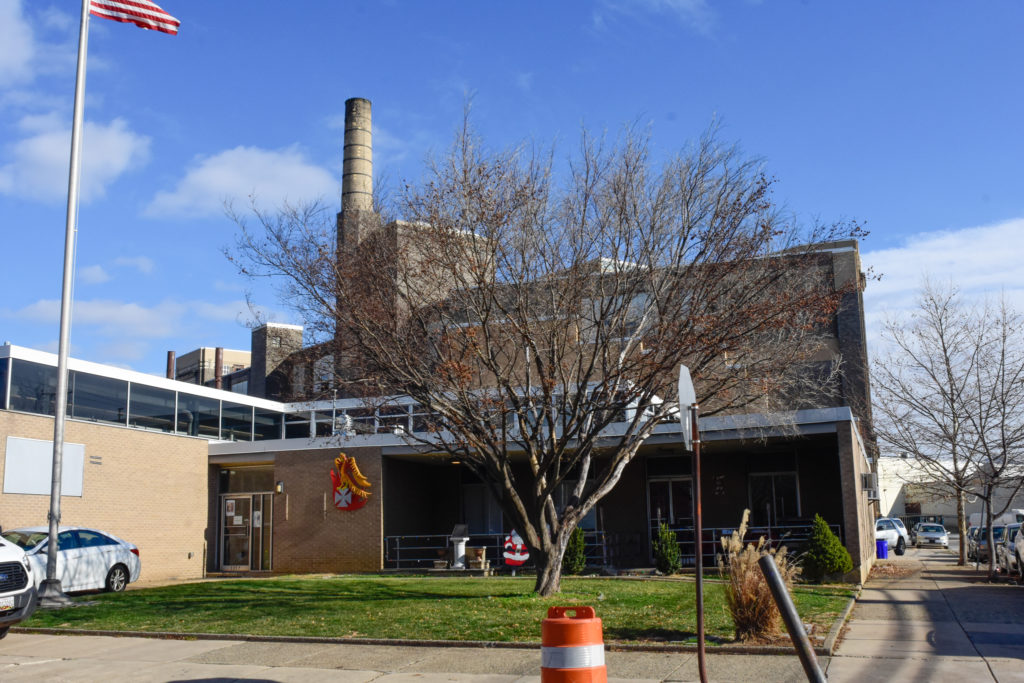
1100 Wharton Street. Photo by Jamie Meller. April 2022
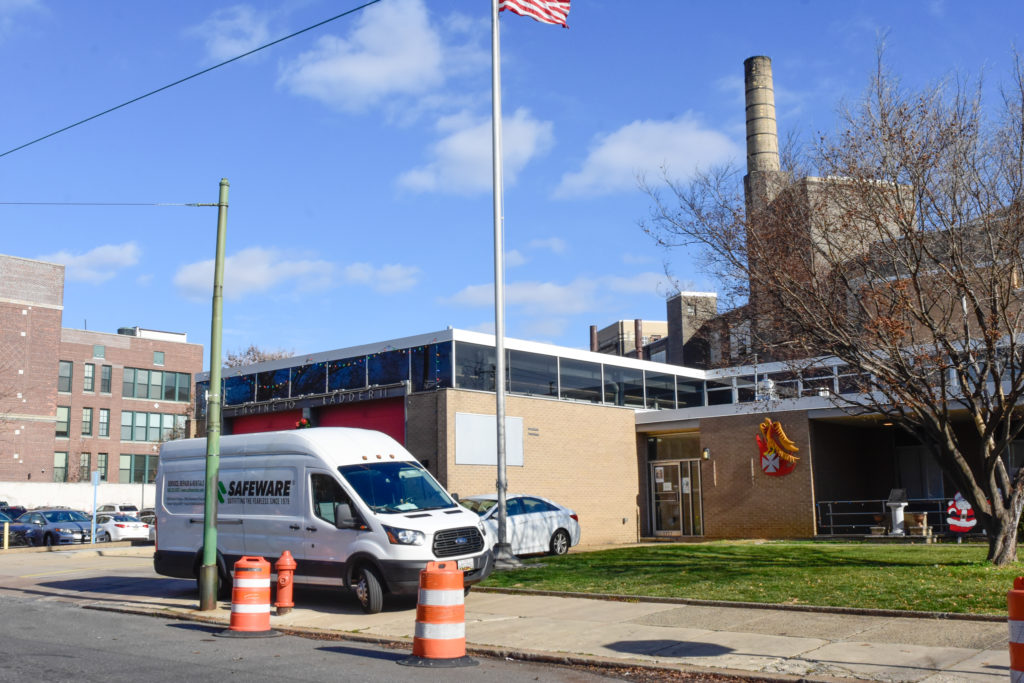
1100 Wharton Street. Photo by Jamie Meller. April 2022
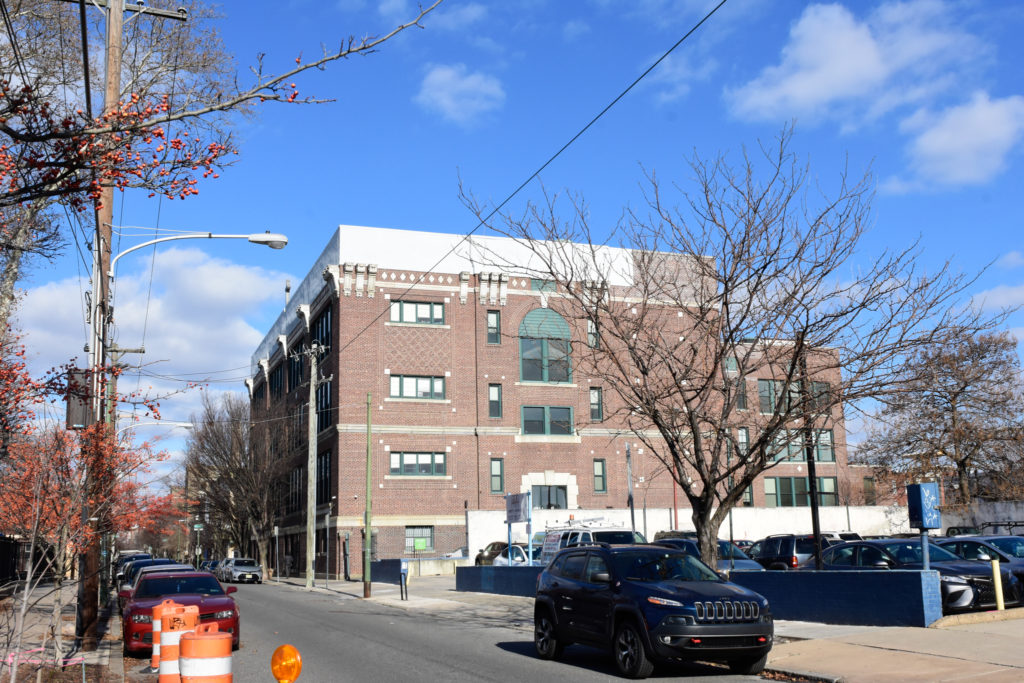
1100 Wharton Street. Photo by Jamie Meller. April 2022
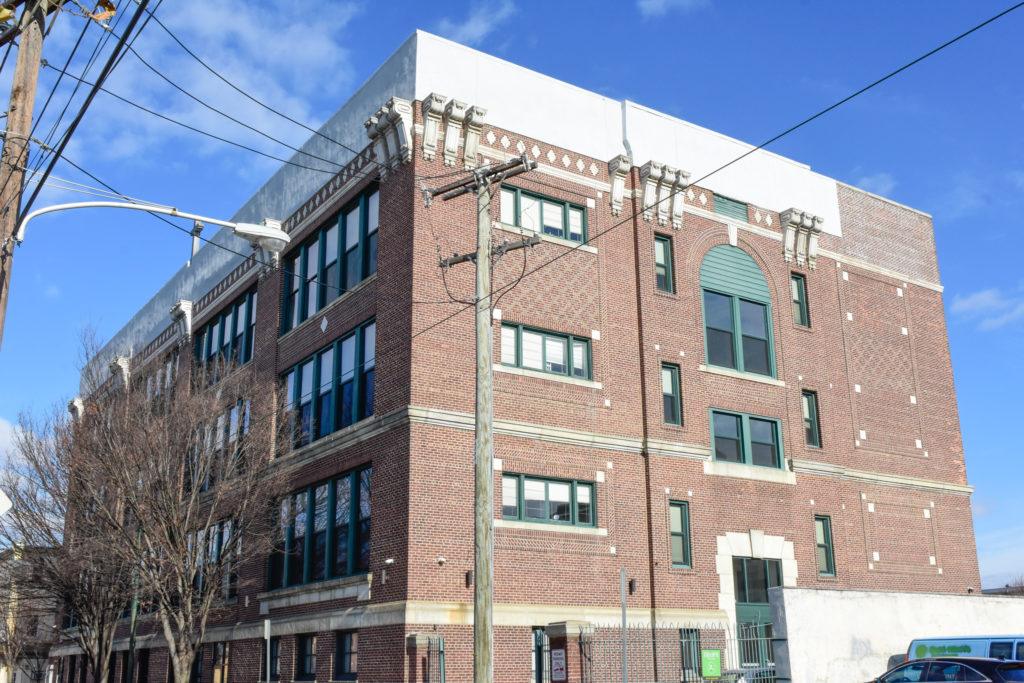
1100 Wharton Street. Photo by Jamie Meller. April 2022
The project will involve a partial tear-down of the rear section of the Fleet Building, and reconfiguring the block interior as a massive parking lot. We are rather dismayed by so much space being squandered on car storage rather than used for pedestrian-friendly open space or resident amenities. However, outrageously but not surprisingly, a very vocal group of local parking supporters had once demanded even more parking to be included in this project.
A 2019 WHYY article described a tense public meeting where “particularly older, long-time residents of the Passyunk Square neighborhood, said they worried that the new apartment-dwellers and their cars would aggravate parking struggles and traffic congestion.”
On the other hand, a “contingent of generally younger residents urged the developers to go even further, arguing for a walkable, dense development, more affordable housing, and less parking. The urbanist 5th Square PAC had put out a call for supporters to attend the meeting “to counterbalance the parking mania,” and in particular to oppose Councilman Mark Squilla’s plan to create new public parking spaces on another city property across Reed Street.”
The article quoted Dena Driscoll, a local resident and bicycling advocate who co-chairs 5th Square, was quoted as saying the city should be doing more planning related to parking “rather than leaving it to residents and developers to argue over in meeting after meeting.”
“I’m excited to see different kinds of housing in my neighborhood. I actually don’t think it’s your job to fix the parking situation here,” she said at the meeting. “Piecemealing every project to force them to take away units and add more parking, and adding expensive underground parking instead of making more affordable housing, is a problem.”
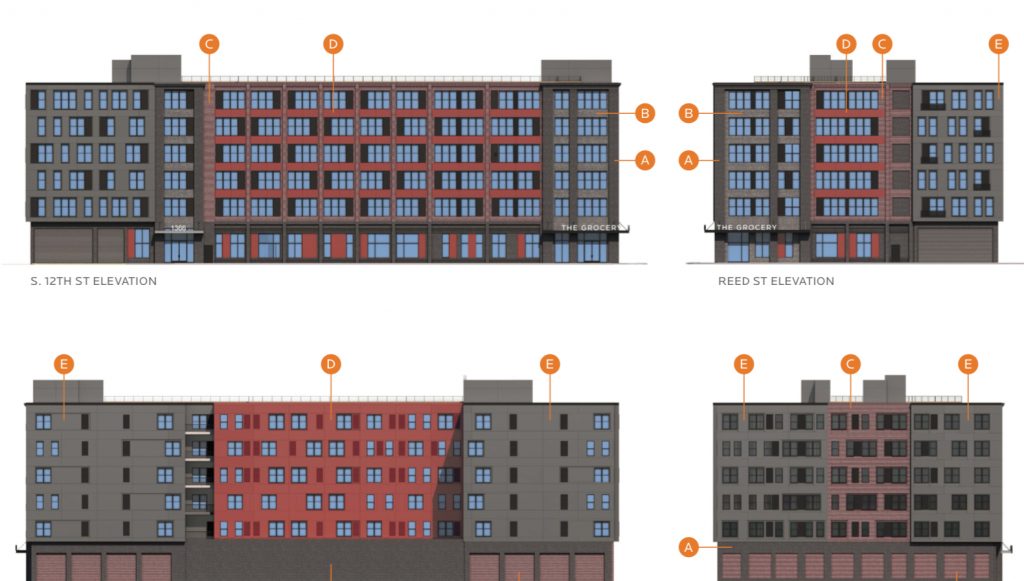
Elevation of 1100 Wharton Street. Credit: JKRP Architects.
Thankfully, the developer appeared to be on the side of sensible urban planning that encouraged walkability and transit use rather than relying on parking overload. Leo Addimando of Alterra Property Group was quoted as stating that “the more parking you build, the more you’re going to attract people who need parking. You build a little bit more than you think you need, and then you build a lot more bike parking than you think you need, and you have a natural gravitation of people’s lifestyles to the buildings where you have parking or don’t have parking, have bike parking or don’t have bike parking.”
Addimando noted that he believes the parking designed into the Wharton Street project is more than sufficient, and added that his company owns more than 2,000 housing units in central Philadelphia and has found that fewer than 20% of its residents have cars.
Addimando had also underscored the future positive impact of the 20,000-square-foot grocery store that will be included within the development. The article noted that the supermarket would compete with a large Acme store, which has a large, underused parking lot, a block away.
“We’re hoping to bring an additional grocer into the neighborhood, something to complement the Acme. It would be a little bit easier to get in and out of, catered more toward the walking traffic than the auto traffic. I would say nicer than the Acme, but that’s not to be a slight against Acme,” Addimando said.
We look forward to further progress on this development, though we would still like to see some changes. Notably, if the number of parking spaces cannot be decreased, we would want to see the block interior transformed into an underground garage, perhaps connected to the one planned in the new building. Although we understand the added expense the developer would incur, if the sizable space was capped with lush greenery both of the public and resident-amenity variety, it would have much potential to turn into a beloved urban oasis for both the building residents and the greater community.
We also commend Alterra Property Group for not giving in to anti-urban-minded critics, who seem to ignore the building’s location in a highly walkable neighborhood, on a site situated within a five-minute walk of the Ellsworth-Federal Station on the Broad Street Line. We are dismayed to hear that these critics would rather flood the local, park-adjacent streets with car-bound residents rather than their car-free counterparts. However, it is encouraging that the younger population is embracing a healthier, pedestrian-friendly, transit-oriented future for the community.
Subscribe to YIMBY’s daily e-mail
Follow YIMBYgram for real-time photo updates
Like YIMBY on Facebook
Follow YIMBY’s Twitter for the latest in YIMBYnews

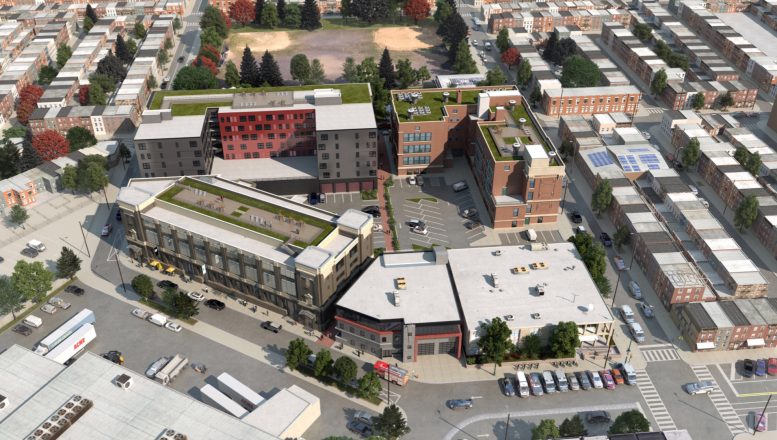
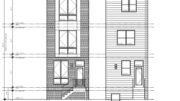
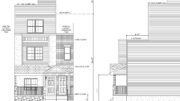
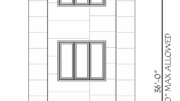
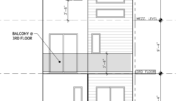
Biggest problem is fear being spread on the neighborhood by different factions fighting for their agenda to be adopted. The cost of all this fear will increase construction costs to the point where project will be killed. The blame is being put on the City for it’s zealous ambitious to please all neighbors instead of pushing the project to completion. President Biden has held back the greatest air force in the world from decimating the Russian Air Fotce into total submission because of his passivity.
A year ago, I thought the project was a go. Now the jackals have delayed it more. This is not how you do business and if Philadelphia was to reap the benefits, they will have to show their balls by forcing people to accept the progress by greenlighting instead of delaying projects to appease dissidents. That would be reason enough to remove councilman tic privilege from City Council.
I hope it goes on to construction.
It seems like the immediate community surrounding the park was pretty amenable to the reuse of Wharton Lofts as 50 new apartment units and the Exhile building with another 25 new apartments with that project offering no parking. A new apartment building is in the works at the corner of 12th & Wharton as a vacant warehouse is rehabilitated and again no new parking is being introduced. The difference being that each of these projects worked or are working with a scale not out of place for the immediate residential neighborhood. Parking feelings aside, the differences to me seem to be in scale and community enhancements.
The Exhile project preserved and enhanced a local community theater space, provided thoughtful landscaping and even included a small courtyard open to the community. This developer did nothing to improve the landscape around the Wharton Lofts. On their Lincoln Square project, the promised community gathering space heralded for in front of the Sprouts is still a concrete wasteland with a couple of trees. Dropping a 150+ unit apartment building in the middle of a residential neighborhood that shares no equals (This isn’t Broad Street or even 11th Street) seems frankly like a fish out of water. Let’s not even get into how the city and its water / sewer utility isn’t keeping up with the added usage from all of these new residents.
But all that aside, yes it would be amazing if the developer would add more green space to this project for both the residents and local community to enjoy. However to simply blame the residents who are demanding more parking for the reason for its exclusion is a bit -short-sighted (in my opinion). A walkable boutique grocery is a lovely idea, but any grocery chain is going to insist on parking spaces for their store, The “underutilized” Acme parking is actually quite crowded when the store is open. I am not quite sure Acme would be happy with this grocer’s customers parking their parking lot if there were not allotted spaces.
One could propose one less grocery store and a bit more green space, but history has shown that with this developer, grocery stores make money and community spaces and landscaping cost money.
Is this an opinion piece?
What a biased article full of opinion more than facts.
The primary duty that an elected official sees as their duty is to get re-elected and re-elected for as long as possible resulting in decisions like the ones involved in this project. The solution is term limits.
How much more green space can you possibly need. It’s directly across the street from a giant just renovated park.
This article portrays the demand for parking as backwards-thinking, but this seems very short-sighted. From the developer’s perspective I understand that less parking means more units, thus more revenue (and the driver behind pushing for less parking). Passyunk residents are mainly young middle class families with young kids. Does the author truly believe this demographic will not own a car…? I do agree that it’s not the developer’s responsibility to solve a neighborhood-wide issue, but any move to make the issue worse is offensive to the residents.
Yes..? The whole of living near City Center, and Philly in general, is not really needing a car. Probably 25% of the units here will have a car. 30 parking spaces seems sufficient to alleviate any additional parking strains.